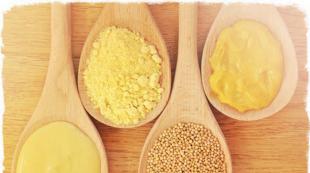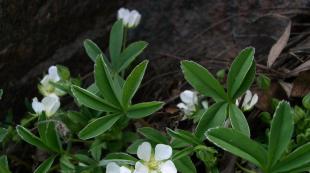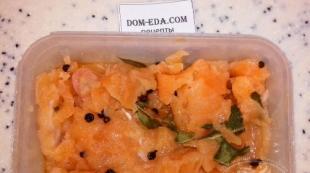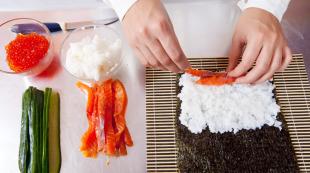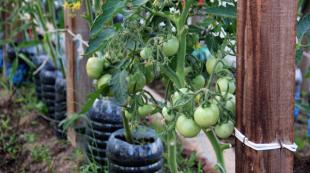Grape breeding - obtaining new varieties of grapes by hybridization. The best new grape varieties
Pages 1 of 4
When growing grapes near the walls and on the arbors, the bushes have to be left uncovered for the winter, since it is not possible to bend them to the ground. It follows from this that frost-resistant varieties are needed for the wall culture of grapes. But the existing frost-resistant varieties, as already mentioned, are significantly inferior to European varieties in terms of fruit taste. Hence the task is to work on breeding new varieties - high-quality and at the same time frost-resistant. Such varieties can be successfully bred by amateur growers.
The main method of breeding such varieties is hybridization followed by hybridization and selection.
To obtain high-quality frost-resistant hybrids, it is necessary to cross various European and Central Asian grape varieties with good palatability berries, with varieties of frost-resistant species.
Of the European varieties, for example, the following can be recommended for hybridization: intensively accumulating sugar White Muscat, Pink Muscat and Black Kishmish, early varieties Zhemchug Saba, Madeleine Anzhevin and Chaush, in which wood ripens well; from Central Asian - large-fruited Taifi, Nimrang, Katta kurgan, etc. Of the frost-resistant forms, the most suitable for hybridization are varieties of the species Vitis Labruska - Isabella, Lydia and others, as well as Amur grapes; in areas infected with phylloxera, varieties and hybrids of Riparia and Rupestris species can also be recommended.
The success of the business depends primarily on the ability to choose parent pairs on the basis of personal observations of the behavior of certain varieties in the area where breeding work is being carried out. It is important not only to skillfully select varieties for crossing, but also to select the most suitable bushes of parental varieties for this purpose. For example, if you notice that a bush is better than other bushes of this variety, endures winter or has better maturation of wood and is less damaged by frost, then just such a bush should be taken for crossing.
It is desirable to cross in the area for which new varieties are being developed, so that hybrid seeds are formed on bushes growing in the conditions of this area. Hybrid seeds should be imported from other places only if there are no bushes necessary for crossing varieties in the place. In this case, you can contact any research institution for viticulture with a request to send hybrid seeds for breeding high-quality frost-resistant grape varieties.
The crossing technique is as follows. On the bushes selected for hybridization, large inflorescences are selected, located on strong, well-growing shoots. The upper part of the bunch is cut to half along the ridge. The rest of the flowers are castrated. With thin tweezers, in one or two steps, remove the cap along with anthers from each bud (Fig. 35). On each inflorescence, 50-100 buds are castrated, the rest are cut with scissors with sharp tips. It is necessary to castrate on the day when the first blooming flowers appear on the bush.
After castration, an insulator is put on the inflorescence to protect it from pollen from neighboring flowering bushes. The insulator is prepared from parchment paper, which is cut into pieces 20 centimeters wide and 25 centimeters long. Then the cut leaves are glued into a tube. To do this, take a half-liter bottle, wrap it with a leaf and glue its edges. The end of the resulting parchment tube from the side of the neck of the bottle) is dipped into water for 3-4 centimeters, then it is tied with a nylon thread along the edge of the wetted area by one knot, the wetted border is folded back from the bottle and the other end is also tied with a thread, after putting a small thread into this edge. cotton ball. The insulator prepared in this way (Fig. 36) is put on the inflorescence, the pedicel is wrapped with a piece of cotton wool and the thread is tightened. In the morning of the next day, the upper end of the insulator is untied and the stigmas of castrated flowers are examined. If droplets of liquid appear on them, pollination must be carried out; if no droplets appear, the insulators are tied and the inspection is continued every morning until droplets appear on the stigmas of the flowers. This moment cannot be missed, since pollination before the appearance of droplets or after they dry does not give results - crossing does not work.
If the paternal bush blooms earlier than the mother bush, pollen is collected in advance for pollination. To do this, anthers (along with pollen) are shaken from flowering inflorescences into a paper bag, dried in the shade and kept in a dry place until pollination is needed. During pollination, anthers with pollen are collected with a brush and shaken over the stigmas, on which droplets have appeared.
 Crossing is best done if the paternal and maternal bushes bloom at the same time. Then, several branches are cut from the well-blooming inflorescences of the paternal bush, brought to the mother bush and inserted one by one into the untied insulators, touching the anthers to the stigmas, then removed. This method of pollination gives the best results.
Crossing is best done if the paternal and maternal bushes bloom at the same time. Then, several branches are cut from the well-blooming inflorescences of the paternal bush, brought to the mother bush and inserted one by one into the untied insulators, touching the anthers to the stigmas, then removed. This method of pollination gives the best results.
After two or three weeks, the paper insulators are removed and gauze bags are put on the inflorescences with young ovaries of berries. When the seeds are fully ripened, the clusters are cut off and hybrid seeds are extracted from the berries.
Methods are known that accelerate the fruiting of grape seedlings - laying vigorous seedlings with katavlak, awakening stepson buds, direct technology. For the hybridization of new varieties at the Donetsk Experimental Station of Viticulture, grafting of lignified eyes onto adult bushes using the method of splitting or a lignified one-eyed cutting into a green shoot was used. With good accretion, the vaccinations in the first year gave an increase of up to two meters, in the second year they developed fruitful shoots, and the inflorescences were used for hybridization. To accelerate fruiting, seedlings in the cotyledon state were grafted onto the green shoots of adult bushes using shelves and wet chambers. Then, developing new methods for protecting green grafts from drying out, they came to the conclusion that for this purpose it is enough to use ordinary laboratory test tubes or plastic covers, which reduces labor costs by 5 times. As a rootstock, you can take any cultivated grape variety or rootstock varieties. Before bud break, most of the shoots are removed with secateurs, leaving 2-3 knots with 2 eyes on each. At the first fragment, 2-3 vigorous green shoots are left on the bush. When they reach 25 cm in length, they start grafting (from May 15-20 to June 15-20). A day or two before that, on the abandoned shoots, stepchild buds, the beginnings of wintering eyes and leaves are removed (up to about the 4-6th node). Hybrid grape seeds are germinated in such a way that by the time of grafting, the seedlings are with cotyledons or two or three true leaves. On the day of vaccination or the day before, they are carefully pulled out of the soil and placed with roots in a bowl of water so that they are well saturated with moisture. It is best to plant seedlings in the early morning or in the evening hours, in cloudy weather - throughout the day.
When grafting 2-3 cm above the third or fourth node, the top of the shoot is removed and an incision is made on it to the very node, preferably slightly oblique.
On the root neck of the seedling or slightly higher, make an oblique cut up to 1 cm long, and insert it under one side of the split. The grafting site is carefully tied with a thin rubber thread, which fastens the grafted components and stretches as the tissues grow. You can tie the vaccinations with a thin plastic film. Then put on a well-whitened test tube with a diameter of 2 cm or a polyethylene cap painted over with silver.
When the seedling starts growing well and forms 2-3 new leaves, the wet chamber can be removed.
During the entire growing season, all shoots on the rootstock are systematically removed. On the grafted seedling, as it grows, stepchildren are pinched, and the shoots are tied to a trellis or peg.
If interspecific hybrids are grafted onto bushes of European varieties, then in autumn they must be covered with earth, especially lower part. If the seedling is grafted on a frost-resistant variety, then it should not be covered.
The survival rate of seedlings varies between 60-80% depending on the year and the quality of the vaccination.
In the first year, vaccinations usually give an increase of 1 to 2.5 m, and some of them lay fruit buds. In the second year of life, from 30 to 50% of plants bear fruit, the rest usually enters the time of fruiting in the third year.
Own-rooted seedlings enter fruiting time only in the 4-6th year of life.
Thus, this method allows to speed up the selection process by 2-3 years.
To accelerate the fruiting of seedlings, the Ukrainian Research Institute of Viticulture and Winemaking named after V.E. Tairov developed a method of abundant feeding of seedlings (P.K. Ayvazyan). To do this, before sowing the seeds, a site is prepared, that is, they dig a trench to a depth of 65-70 cm and fill it well with structural soil with organic and mineral fertilizers.
For one square meter make 10-30 kg of humus, 100-200 g of superphosphate, 50-70 g of ash.
Fresh or not completely rotted manure should not be applied. In the presence of pests (bearworm, larvae, beetles, etc.), the soil is seeded with hexochloran. The trench is filled with mixture
soil with fertilizer with a layer of 55-60 cm, after compaction, the remaining part of the trench is covered with structural soil. Fertilizers are not applied to this layer, so as not to cause a burn when sowing seeds. After sowing and emergence of seedlings, watering is carried out. During the growing season, 4-5 liquid mineral supplements are made at the rate of 150 g of superphosphate, 75 g of potassium salt per 1 bush. Plant nutrition area - 0.75 x 1 m.
Wholesome nutrition promotes good growth plants, laying fruit buds in the first year, and some plants bear fruit in the second year.
Thus, growing seedlings on a high agricultural background contributes to the accelerated formation of generative organs and earlier fruiting of plants.
It should be remembered that pruning principles developed for existing grape varieties cannot be mechanically transferred to seedlings that have not yet entered the fruiting season.
In the first year, if the seedling has an increase of more than 1 - 1.5 m, then it is necessary to leave the entire mature part of the shoot, which makes it possible to avoid the removal of fruit buds, located, as a rule, in the upper nodes of the annual shoot. After the development of green shoots, when inflorescences are already visible on them, they make a fragment of barren and weaker ones, that is, the load is regulated by a green fragment. Young plants should not be overloaded with crops. If the seedling is barren or generally weak, then one or two green shoots are left on it, during the growing season, stepchildren are pinched on it. During the growing season, a well-formed shoot with fruitful eyes grows, and the next year the plant bears fruit.
Fruiting seedlings are cut and formed in the same way as bushes of ordinary standard varieties - frost-resistant forms on a high stem with two cordons.
When the seedlings enter the fruiting season, they begin to isolate the best specimens, which combine high resistance to frost, diseases and high product quality with its excellent appearance. When these qualities are confirmed, they begin to accelerate their reproduction within 2-3 years.
I became interested in grapes about 15 years ago. At that time, I grew the “Queen of the Vineyards” and “Lydia”, however, like many ... I did not even suspect that there were disease-resistant grape varieties. Every year I had to spray Bordeaux liquid. I saw a vineyard at my classmate and got carried away. Yes, so much so that I uprooted everything fruit trees on the estate, drove a tractor, planned, and out of the blue he broke into planting grapes. No experience, I had to go to Zaporozhye to S.G. Leonov. Later, the author of the book “Amateur viticulture.” He told me in detail what and how. I started planting with cuttings. Then I went to Klyuchikov E.A. for seedlings. Corresponded with many growers, such as: Sokolov V.I., Olefir E.M., Alekseenko A.N., Kuzmenko N.I., Dmitrenko V.P., Piven I.I., Sinyak G. I.and others..Sokolov V.I.I want to note as a knowledgeable, experienced viticulturist-practitioner from the city of Nikolaev. He helped me a lot at that time with new varieties.After all, what do we want? to surpass the rest and no one had. Like pigeons. In a word, I also joined this race for the “miracle variety” of grapes. and replacing the soil .. And 2004, a shallow year, cured me of my craving for a “new variety.” I began to see old varieties created by specialists and tested by time differently. I’m not against today’s home-grown breeders, but why fool people? so what? Now you need to test and get a certificate? And who can help evaluate and issue a "good" for distribution? If Krasokhina S.I. trades in dubious varieties. site. So it turns out that black business is flourishing in the field of amateur viticulture. An experienced wine grower, of course, will not buy it, but beginners, even very easily.
I, too, at one time, for sporting interest, wanted to create a variety. After all, in essence, what is it? Any seedling carries the uniqueness of the variety, so do it. In my opinion, do not blame me for simplicity, there are two ways to get a variety. Clone selection and hybrid. Clone, this is when the entire vine of the variety goes to planting seedlings and the best ones are selected. .But this is a long way. And the second, a hybrid in which plant pollen is involved. Please forgive me for my stupidity, but as I understand it. I got this process to growing seedlings. but “my selection stopped.” And I started with the following. I don’t remember exactly, but it seems that the bunches of the Rapture variety were placed in a paper bag, and when flowering, I tied flowers of a different variety to them, in my opinion, Natalya. the appearance of a droplet on the pistil, remove the stamens for bisexuals, and for female flowers, it is even easier to tie and wait. in general, at that time I didn’t pursue the goal of creating super-berries. It was just interesting. When the berries are tied, the packages are removed and they wait for full ripening. Then, like in tomatoes, the seeds are selected, washed in a weak solution of potassium permanganate and dried. Store in the basement , preferably in a bag of thick fabric in the sand. In early spring, the seeds are stratified in wet sand for a week, then they are allowed to dry and planted like carrots with sand, but only in school and under a film. Normal care, watering and thinning. sores. To get the first trial berries, there should be 5 year old rootstock bushes that are cut off the trunk to cause growth and the best seedlings are grafted onto them. If you are lucky, you will get new variety.So, there is nothing original in this, there would be time and desire.
Some growers sleep and see how to breed a new variety, and what to cross to get a hybrid form that strikes the imagination in size, color and taste ... I want to disappoint those who want to try on Michurin's laurels. Selection is a long process.
If time doesn't scare you, be patient! You will need the following gentlemen's kit:
- at least five years to breed one variety;
- decent piece of land;
- the ability to endure failure;
- receive positive emotions from the lesson.
It is useful to familiarize yourself with the professional literature. This may be a textbook on viticulture by the authorship of Negrul, and "Genetics and selection of the vine" by Ayvazyan P.K. and Dokuchaeva E.N.
You also need to turn your vineyard into an impregnable fortress, otherwise the fruits of your combinations may go to banal thieves who will sell bunches on the market, and you will lose all the results of your work. Such cases are not just unsettling, they leave a bitter aftertaste for a long time.
And still it is necessary to put only feasible tasks. Breeding frost-resistant grapes with good performance whole scientific institutes are engaged, and the results are still modest.
An amateur breeder cannot handle such tasks. The probability of getting a variety with frost resistance -30...-32°C from offspring with frost resistance -23 ... -25 ° С is the same as hitting the jackpot in the lottery. The same can be said about high resistance to diseases.
Despite these limitations, the field of activity of enthusiasts is very extensive. You can improve the color of the bunches, the shape of the berries, the size, the taste, the structure, the ripening time, the vigor of the growth, the yield, the sex of the flower, the seedlessness… So that's enough work.
Never cross pairs at random. Use the “duet” rule: if you plan to breed a large-berry variety with a given color of bunches, then choose both parental forms with a given color. Use this rule when setting a selection problem. The probability of getting a bisexual variety is different: when crossing bisexual varieties, the probability is 3 to 1. That is, three seedlings will be bisexual, and one will be unisexual. Previously, all same-sex forms were rejected. But if we do this now, then we would be left without Talisman, Flora, Flamingo, Victoria, Sofia, Gourmets ... So do not rush to reject hybrid forms, maybe they will have other advantages. In industrial selection, out of a hundred seedlings, only one or two with the desired properties were selected, the rest were rejected. In amateur breeding, 20-30 seedlings are considered sufficient.
And the last. It has been noted that the earlier the maturation period of the mother form, the worse the germination of hybrid seeds. The lowest germination in super-early varieties is only 1-1.5%. And in maternal forms with early maturation - 10-25%. The most best germination in seeds from late mother bushes.
Most popular on the site

01/18/2017 / Veterinarian

BUSINESS PLAN for breeding chinchillas from P...
AT modern conditions economy and the market as a whole for starting a business...
01.12.2015 / Veterinarian

If you compare people who sleep completely naked under the covers and those ...
11/19/2016 / Health

Moles are not our enemies, they are just unwanted guests on the site. Between p...
26.03.2020 / Kitchen garden

GUYOT AGAINST WOOD At one time I was fond of single-shoulder shaping...
03/01/2020 / Grapes

Lunar-sowing calendar gardener-gardener...
11/11/2015 / Kitchen garden

The doctor who contracted the coronavirus...
British doctor Claire Gerada has recently been ill with coronavirus and...
24.03.2020 / Health

Melons are not imported bananas. They are both tastier and more aromatic...
03/25/2020 / Kitchen garden

Reflections on unspoken goals and objectives...
Age statistics of mortality from coronavirus Infant ...
26.03.2020 / Society

The other day I went to the site to a good friend of the vegetable grower. Plot me...
03/25/2020 / Kitchen garden

What happens to the body during corona...
In this article, we will talk about exactly how the coronavirus infects the body. What...
Page 4 of 5
Hybridization is the crossing of two different varieties belonging to the same species (intraspecific), or plants of two various kinds(interspecies). Hybridization is one of the most reliable methods for creating new grape varieties, especially in combination with additional cultivation of the resulting young hybrids.
Experiments with the vine showed that seedlings obtained as a result of forced self-pollination, in most cases, even with good conditions growing, much weaker than seedlings obtained from pollination with foreign pollen.
Hybridization technique
When carrying out hybridization, it is necessary to pay great attention to the timely castration (6-7 days before flowering) of species or varieties of grapes with bisexual flowers, as well as to their pollination.
Rice. 157. Parchment bags.
Varieties with functionally female flowers are not castrated; they are pre-isolated in parchment bags. 1 When carrying out hybridization, parchment paper bags are needed to isolate the inflorescences (Fig. 157) and metal tweezers to remove stamens (castration).
When hybridizing, well-developed inflorescences are selected and, first of all, their tops are removed, since they are late with flowering. On one inflorescence, which can have hundreds of buds, 30-50 pieces are castrated, correctly distributed, and all the rest are removed. Castration is done carefully, while taking the inflorescence with the left hand, with the right hand, with the tip of the tweezers, they grab the upper edge of the corolla obliquely along with the tops of the stamens inside, and, bending, tear them off (Fig. 158).
If stamens or petals remain, they are also removed with tweezers so that only the pistil remains with the remnants of the stamen filaments. The remaining uncastrated flowers are removed with tweezers.

Rice, 158. Castration of a grape flower.
The castrated inflorescence is covered with a paper bag. After 4-5 days, the bag is removed and it is checked whether the stigmas are ready to receive pollen, which is recognized by the release of droplets on them, as well as by the flowering of buds of uncastrated inflorescences. Most the best time for pollination from 6 to 11 o'clock in the afternoon.
Raising seedlings
Young seedlings, especially hybrids with a loose heredity, are easily amenable to change under the influence of various environmental conditions, because they develop, form their qualities and their organism from the elements of the same environment. Therefore, by artificially changing environmental conditions, it is possible to direct the education of seedlings and develop in them the qualities necessary for pasture.
To educate seedlings based on a deep knowledge of plant biology, it is necessary to create various conditions at different stages of their development.
Vegetative hybridization
Vegetative hybrids are organisms that combine the hereditary properties of two different species or varieties as a result of their grafting. According to T. D. Lysenko, vegetative hybrids basically do not differ from hybrids obtained sexually. Any trait can be passed from one plant to another through grafting, just as it can be transmitted sexually. The behavior of vegetative hybrids in subsequent generations is similar to the behavior of sexual hybrids.
The doctrine of vegetative hybridization as a method of practical selection was created by IV Michurin. He developed the mentor method based on mutual influence between rootstock and scion.
I. V. Michurin proved that the variety of perennial fruit plant, which is an already established organism, cannot be changed under the influence of vaccination. Therefore, when grafting old grape varieties on old varieties of phylloxera-resistant rootstocks or on frost-resistant Amur grapes, no change in the hereditary qualities of either rootstock or scion is observed.
The change in hereditary qualities as a result of vaccination is manifested only in young hybrid organisms with a shaken heredity. By grafting cuttings of hybrid seedlings onto old plants with established heredity, it is possible to purposefully change the qualities of seedlings.
Old plants with already established heredity (mentor) can also be taken as grafts. In this case, by grafting cuttings of a given variety or species onto seedlings at different periods of their development and maintaining the influence of a mentor for a certain time, the breeder educates the seedling in the right direction. It enhances and develops in him good qualities, delaying or eliminating the tendency to manifest undesirable qualities.
Developing Michurin's doctrine of vegetative hybrids, T. D.; Lysenko proved that the changes in hereditary qualities occurring in this case are explained by the metabolism between the stock and the scion, the result of the mutual assimilation of substances produced by each component.
Using the mentor's method, I. V. Michurin obtained a number of varieties of fruit crops. Vegetative hybridization in viticulture in the USSR began to be carried out on a large scale only recently.
Seedling selection
The selection of seedlings is carried out in the first year of their cultivation. In the first year, diseased, albino and frail plants are destroyed. Selection can be carried out on the basis of early ripening of shoots, which, according to I. V. Michurin, is a sign of early ripening of grapes. There are, however, exceptions, such as the Fergana black variety, whose clusters ripen very early, while the shoots become woody late.
To obtain frost-resistant varieties with a short growing season, it is necessary to select seedlings that plant growth early. In the spring, the most frost-resistant seedlings are selected, as well as seedlings with later bud break. During flowering, all seedlings with defective flowers are selected and destroyed.
During the first fruiting, the clusters and berries of seedlings are usually underdeveloped, smaller. Their normal formation comes gradually. Subsequently, the quality of the grapes can be significantly improved by the use of appropriate agricultural practices, as well as by vegetative propagation of the best seedlings.


